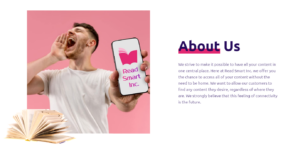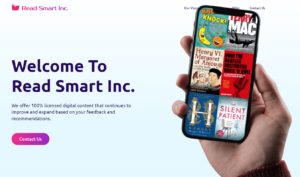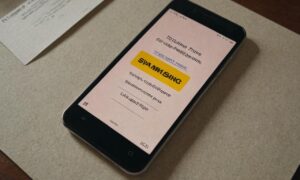Recently, claims of a $6,400 government subsidy have been spreading like wildfire on social media and through online ads. But is this subsidy offer legitimate, or is it just another scam preying on people struggling financially? In this blog post, I’ll dive deep into the truth behind these viral subsidy claims and help you separate fact from fiction.
As someone who has been closely following the various financial aid programs and stimulus efforts, I feel compelled to address the recent wave of posts and ads touting a $6,400 subsidy. With the rising cost of living and many people struggling to make ends meet, it’s understandable that such an offer would grab attention. However, it’s crucial to approach these claims with a healthy dose of skepticism.
In my experience, if something sounds too good to be true, it often is. I’ve seen countless scams over the years that prey on people’s hopes and fears during difficult times. It’s important to always do your research and verify the legitimacy of any financial aid offer before providing personal information or paying any fees.
How Scammers Are Using the Inflation Reduction Act to Deceive
One of the tactics scammers are using to make their $6,400 subsidy claims seem more credible is by tying them to the Inflation Reduction Act. They suggest that this subsidy is part of the government’s efforts to help people cope with the rising cost of living. However, the reality is that the Inflation Reduction Act does not include any provision for a $6,400 subsidy.
Scammers are simply using the buzz around the act to lend an air of legitimacy to their false claims. They know that many people are struggling financially and may be more likely to believe in a government aid program. By linking their scam to a real piece of legislation, they hope to trick more people into falling for their scheme.
It’s crucial to remember that government financial aid programs are typically well-publicized through official channels. If a subsidy claim is primarily spreading through social media posts and sponsored ads, that’s a red flag. Always verify the information through trusted government sources before believing any claims.
Understanding the Real Affordable Care Act Health Subsidies
Another way scammers try to make their $6,400 subsidy claims seem legitimate is by associating them with the Affordable Care Act (ACA). They may suggest that this subsidy is a new addition to the ACA’s health subsidies or that it’s a way to claim free medical benefits. However, this is not the case.
The ACA does provide subsidies to help people afford health insurance, but these subsidies are based on income and are not a flat $6,400 amount. The subsidies are also applied directly to your monthly insurance premiums, not sent to you as a check or direct payment.
If you’re unsure about your eligibility for ACA subsidies or need help understanding your healthcare options, reach out to a trusted navigator or certified enrollment counselor. They can provide accurate information and guide you through the process without any risk of falling for scams.
“Be cautious of any unsolicited offers promising large subsidies or free benefits,” warns Jenna Kaczmarek, a certified health insurance navigator. “Scammers often use high-pressure tactics and create a false sense of urgency. Take your time, do your research, and always verify the information through official channels.”
Tactics Used in the $6,400 Stimulus Check Scams
In addition to the $6,400 subsidy claims, there have been similar scams circulating about a supposed $6,400 stimulus check. These scams often use deepfake videos or fabricated news articles to make their claims seem more credible. They may also use terms like “financial aid program” or “special subsidy offer” to grab people’s attention.
One common tactic in these scams is to create a false sense of urgency. They may say that you need to “claim your subsidy quickly” or that the offer is only available for a limited time. This pressure is designed to make you act before you have time to think critically or verify the information.
Another red flag is if the offer requires you to provide personal information or pay a fee to claim your subsidy. Legitimate government aid programs do not typically require upfront payments or fees. If you’re asked to provide sensitive information like your Social Security number or bank account details, that’s a sure sign of a scam.
How to Protect Yourself from Falling for Subsidy Scams
So, how can you protect yourself from falling for these subsidy scams? The first step is to always approach unsolicited offers with caution. Don’t let the promise of a large subsidy cloud your judgment or rush you into making a decision.
If you see a subsidy offer, take the time to research it thoroughly. Check official government websites and trusted news sources to see if there are any mentions of the program. Be wary of any offer that primarily spreads through social media or sponsored ads.
It’s also important to remember that legitimate government aid programs typically have clear eligibility requirements and application processes. If an offer claims you can get your subsidy with no eligibility check or that you need to act now to claim your benefit, that’s a red flag.
The Platforms Used to Spread the $6,400 Subsidy Misinformation
The $6,400 subsidy scam has been spreading primarily through social media platforms and online advertising. Facebook videos, TikTok posts, YouTube ads, and sponsored content have all been used to propagate this misinformation.
Scammers often use these platforms because they allow for rapid spread of information and can target people based on their interests or demographics. They may create fake accounts or pages to make their posts seem more credible, or they may pay for sponsored posts to reach a wider audience.
It’s important to remember that just because something is posted on social media or appears in an ad, that doesn’t make it true. Always fact-check claims through reliable sources before sharing or acting on them.
As tempting as a $6,400 subsidy may sound, the reality is that this claim is nothing more than a scam. By staying informed, verifying information through trusted sources, and being cautious of unsolicited offers, you can protect yourself from falling victim to these types of scams. Remember, if it sounds too good to be true, it probably is.
See also:
- Uncovering the Truth: Is the DHHS Grant Program on Facebook a Scam?
- Is the TaylorMade Qi10 Driver Giveaway Legit or a Scam?
- Is the National Student Leadership Conference (NSLC) Legit? A Comprehensive Review
- Is the MrBeast Casino App a Legit Gambling Platform or an Elaborate Scam?
- How to Scam a Scammer on Cash App: Avoid Common Fraud Schemes






